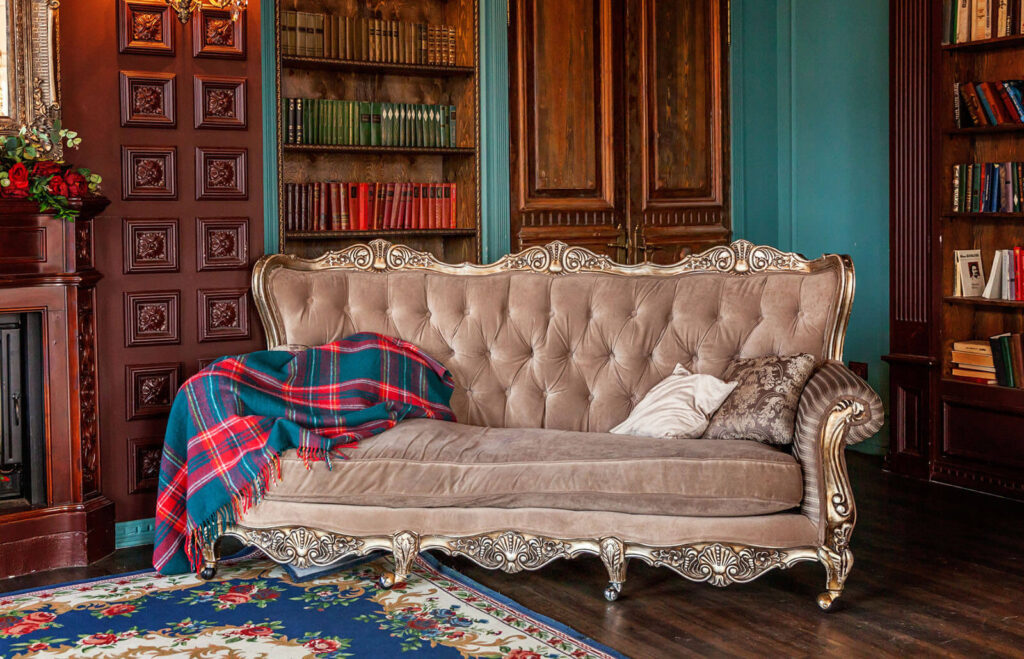The Victorian era, named after Queen Victoria, who ruled Britain from 1837 to 1901, was a time of profound cultural, industrial, and socio-political changes. It was also a time when some of the most opulent and lavishly crafted furniture styles came into existence. Victorian-style furniture, with its intricate detailing, luxurious upholstery, and imposing presence, continues to be a symbol of elegance, refinement, and sophistication.

A Blend of Various Influences
One of the defining features of Victorian-style furniture is its eclectic mix of various stylistic influences. The era itself was marked by an intense interest in the gothic, rococo, and neoclassical styles of the past. The designs therefore often incorporated elements from these and other exotic influences, including Asian and Middle Eastern styles.
As a result, Victorian-style furniture pieces can showcase an array of features – from ornate wood carvings to luxurious upholstery, from heavy proportions to elaborate decorative elements.
Materials and Craftsmanship
Victorian furniture was typically made from high-quality, dark woods such as mahogany, walnut, and rosewood. The furniture pieces were crafted with a great deal of attention to detail and a focus on durability and strength. Machine production had started to take root during this era, but it did not detract from the quality or intricacy of the furniture pieces.
Craftsmen of the time employed elaborate carving techniques to produce the intricate designs characteristic of Victorian-style furniture. Marquetry and parquetry, methods of creating intricate patterns with veneer, were also popular.
Signature Characteristics
Victorian furniture is characterized by its substantial size, as it was designed for large and opulent homes of the era. The pieces often feature heavy ornamentation, including intricate wood carvings, gilded accents, and plush fabrics.
Upholstery is another characteristic feature of Victorian furniture. High-quality fabrics like velvet and brocade, adorned with elaborate patterns and rich colors, were often used. Tufting was a common method used to secure these fabrics.
Another striking feature is the prevalent use of curves – in the form of cabriole legs, scrolled arms, and camelback sofas. Gothic-inspired pointed arches and rococo-style s-curved lines also found their way into many designs.

Legacy and Modern Adaptations
Victorian-style furniture continues to be cherished and sought after, not just for its historical value but also for its sheer visual appeal and craftsmanship. These pieces are an investment, often being passed down through generations.
Today, the essence of Victorian design is often incorporated into modern homes through ‘Victorian Revival’ or ‘Neo-Victorian’ styles. These often involve combining traditional Victorian elements with modern sensibilities, resulting in furniture that strikes a balance between the past and the present.
Victorian-style furniture is a testament to an era that valued craftsmanship, detail, and opulence. Despite changing trends and styles, it continues to hold a place of reverence in the world of interior design, thanks to its timeless appeal and sheer grandeur.
About Us
At 1ST Missing Piece, we specialise in offering unique, playful, and innovative furniture online. With a focus on artisan-crafted pieces from around the globe, our mission is to transform furniture shopping into an adventurous journey of discovery. Our extensive catalogue features a diverse selection of standout furniture pieces that add comfort, delight and style to any home or workspace. Beyond functionality, our handpicked furniture collection makes a bold statement, offering lasting impressions and superior quality that sets us apart in the competitive online furniture market.
